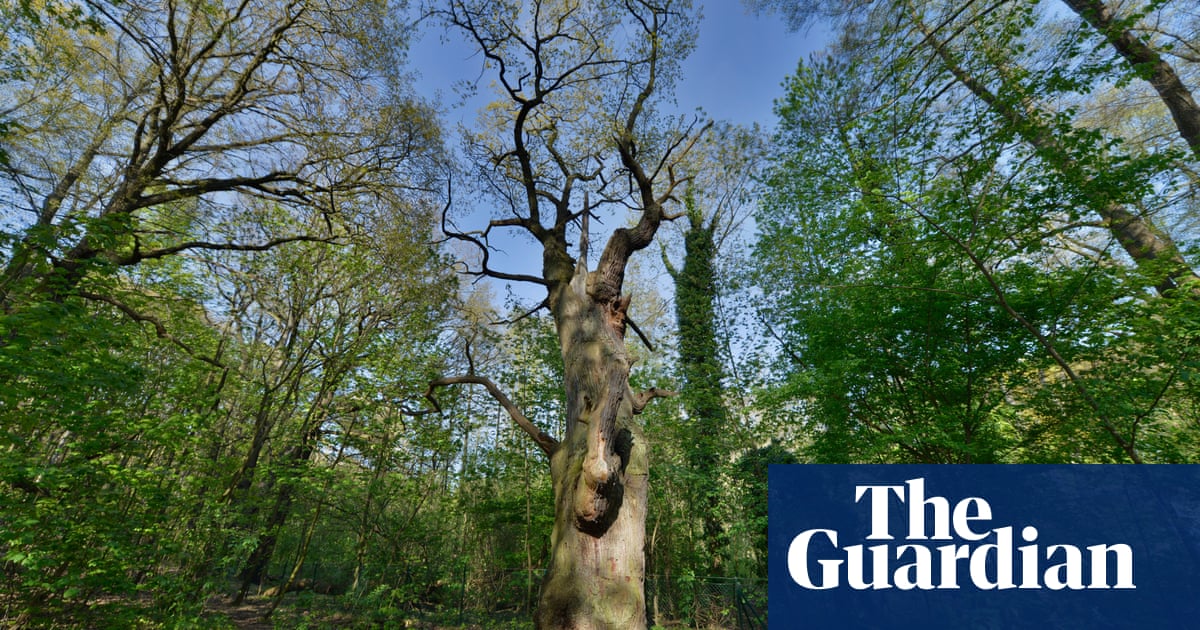An ancient English oak believed to be Berlin’s oldest tree is suffering the effects of a prolonged dry spell in the German capital, local authorities have said, compounding already significant damage to its once lush canopy and branches.
“Dicke Marie” (Fat Marie), as Berliners affectionately call the tree located in the northern Tegel Forest, has been deprived of essential moisture in recent years as a result of extended periods of sparse rainfall blamed on the climate crisis, according to natural resource officials.
“But we hope that she’ll still be with us for another couple decades or even centuries,” Marc Franusch, the head of the Tegel Forestry Office, told the newswire DPA.
Franusch said the remainder of spring could bring relief in the form of more precipitation but that pruning the gnarled Marie, whose age is estimated at 500-600 years, was not an option.
“We want to be very gentle and prudent in stabilising the tree and its situation to do our best to support its vitality,” he said. The ancient oak stands about 18.5 metres tall, with a trunk about 2 metres in diameter.
Dicke Marie has long been a popular attraction for nature lovers, particularly in the years of Berlin’s cold war division by the Wall, when protected forests offered West Berliners a cherished refuge while the surrounding countryside lay beyond the border in communist EastGermany.
But the tree’s remote location at the northern end of Lake Tegel and its diminished, increasingly knotty profile as neighbouring trees overshadowed it have meant ever fewer visitors seek it out, forestry officials say.
Dicke Marie nevertheless was granted National Heritage Tree status by the German Dendrological Society in 2021, the first awarded to a tree in a forest.
Its remarkable longevity had been attributed to its lakeside home, with its roots soaking up the available moisture even during drought periods. But increasingly arid conditions in the region now appear to be taking their toll.
This March was the driest ever recorded in Germany, according to the German Weather Service, and April has seen little improvement.
The vast rural Brandenburg state surrounding Berlin reported only 10-20% of the expected precipitation in February and March, Raimund Engel, a regional forest fire protection officer, told the broadcaster RBB.
Sign up toDown to Earth
The planet's most important stories. Get all the week's environment news - the good, the bad and the essential
after newsletter promotion
Many traditional Easter weekend bonfires in Berlin and Brandenburg were called off this year owing to parched conditions in the region, to prevent uncontrolled blazes. The festivities trace their roots to pagan rituals to banish evil winter spirits.
The Berlin oak’s nickname Dicke Marie is believed to have come from the aristocratic brothers Alexander and Wilhelm von Humboldt, who grew up in nearby Tegel Palace, after their beloved cook.
The Humboldts gave their own name to Berlin’s “fattest” tree,a 350-year-old oak in the same forestwith a circumference of nearly 8 metres.
Germany is believed to have about 100 trees that are at least 400 years old.
